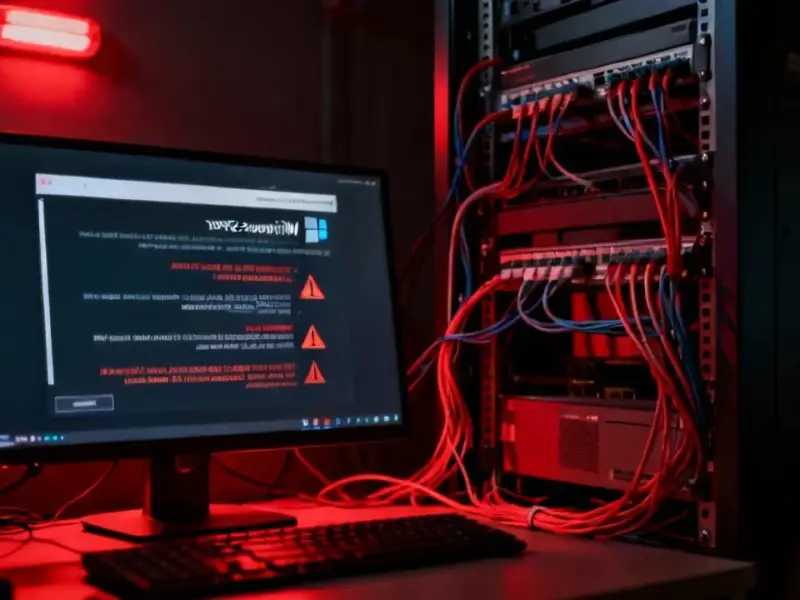According to Inc, Elon Musk announced on October 31 that SpaceX plans to deploy data centers in space using scaled-up versions of Starlink V3 satellites. Musk responded to journalist Eric Berger’s post about the concept’s viability, stating that SpaceX’s satellites with high-speed laser links could host computing power while orbiting just 550 km from Earth, providing latency as low as 25 milliseconds. The company’s upcoming V3 satellites reportedly weigh up to 4,409 pounds and could be made even larger for this purpose, though they require SpaceX’s Starship rocket for launch. Meanwhile, startup Starcloud is preparing to launch its Starcloud-1 satellite carrying NVIDIA’s H100 GPU, aiming to eventually build five-gigawatt orbital data centers approximately 2.5 miles wide, with CEO Philip Johnston claiming the approach could save 10 times the carbon emissions compared to Earth-based operations. The concept represents a radical approach to solving AI’s growing energy demands.
The Overwhelming Technical Hurdles
The engineering challenges of space-based data centers extend far beyond what most people appreciate. Traditional data centers require massive power infrastructure, sophisticated cooling systems, and physical maintenance capabilities that simply don’t exist in orbit. While Starcloud’s technical documentation suggests using NVIDIA’s H100 GPUs, these components weren’t designed for the radiation environment of space and would require extensive hardening against single-event upsets and latch-up events that could destroy entire compute clusters. The thermal management problem alone is staggering—without Earth’s atmosphere for heat dissipation, orbital data centers would need to rely entirely on radiative cooling, which is dramatically less efficient than terrestrial solutions.
The Energy Generation Problem
Powering multi-gigawatt data centers in space presents an unprecedented challenge in space-based energy generation. Current commercial satellites typically generate between 5-20 kilowatts using solar panels, while Starcloud’s vision of five-gigawatt facilities would require a 250,000x scale-up in power generation capability. The physical size of solar arrays needed would be measured in square kilometers, creating enormous structural and deployment challenges. Nuclear power alternatives face their own regulatory and technical barriers, and battery systems for eclipse periods would need to be orders of magnitude larger than anything currently deployed in space. SpaceX’s own documentation shows that even their largest satellites currently planned are nowhere near this scale.
The Launch Cost Equation
While Starship promises reduced launch costs, the economics of sending data center infrastructure to orbit remain prohibitive. A single H100 GPU module weighs approximately 70 pounds, meaning a data center with thousands of these units would require multiple dedicated Starship launches just for the computing hardware. When you factor in power systems, structural elements, and cooling infrastructure, the mass quickly escalates into the hundreds of tons range. Even at Musk’s aspirational $10 million per Starship launch, the transportation costs alone would dwarf the hardware costs. Starship’s recent successful test represents progress, but regular, reliable heavy-lift capability for commercial payloads remains years away.
The Latency Advantage Myth
The claimed 25ms latency advantage of low Earth orbit data centers overlooks critical networking realities. While the speed of light advantage for satellite-to-satellite communication exists, the round-trip to ground stations and through terrestrial networks largely negates this benefit for most applications. The Starlink technology page describes their current laser inter-satellite links, but these are optimized for internet traffic, not the massive, continuous data flows required for AI training and inference. The bandwidth requirements for transferring multi-terabyte datasets between Earth and orbit would create bottlenecks that undermine any theoretical latency advantages.
Radiation: The Silent Killer
Space radiation presents an existential threat to conventional computing hardware that neither company has adequately addressed. Cosmic rays and solar particles can cause bit flips in memory, degrade processor performance, and permanently damage semiconductor components. While coverage of space-based computing often focuses on the exciting possibilities, the reality is that commercial GPUs would need complete redesign with radiation-hardened manufacturing processes that typically lag behind consumer technology by several generations. The error correction overhead alone could consume 30-50% of the computing capacity, dramatically reducing the efficiency gains.
When Could This Actually Happen?
Based on current technology readiness levels and the scale of engineering challenges, operational space-based data centers of meaningful capacity are at least 15-20 years away. The incremental approach—starting with small-scale demonstrations like Starcloud-1—makes technical sense, but scaling to commercial viability requires breakthroughs in multiple domains simultaneously. The environmental benefits are real, but they must be weighed against the carbon cost of manufacturing and launching thousands of tons of infrastructure. As coverage of the startup approach indicates, we’re at the very beginning of a long development cycle where the fundamental physics and economics remain challenging.




